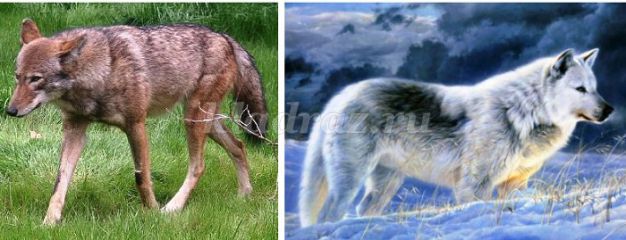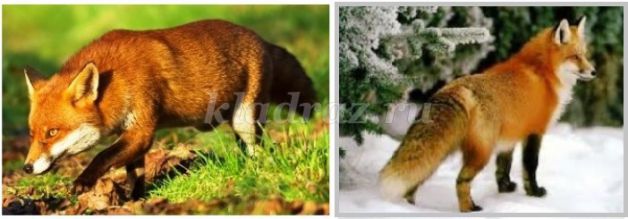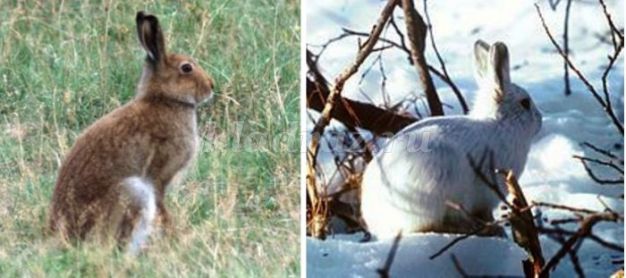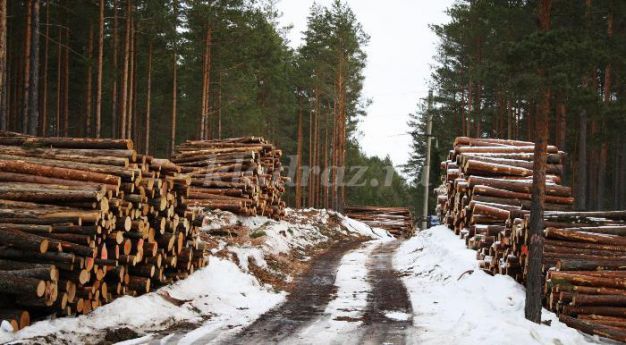Game lesson "Journey to the world of wild animals of the middle lane" for children 5-6 years old
Kovalchuk Valentina Nikolaevna Educator. Kindergarten №90. City of Tyumen.Material Description: The materials presented in the development can be used by preschool teachers as a whole and separately.
Target: To systematize the knowledge of children about wild animals of the middle zone.
Tasks:
Expand and clarify children's ideas about nature.
Deepen children's ideas about wild animals of the middle lane.
Improve the dialogic form of speech.
To instill interest in fairy tales, the heroes of which are wild animals of the middle zone.
Cultivate a respectful, caring attitude towards nature. Leading: I invite everyone to "Journey to the world of wild animals of the middle zone."
Leading: There are many miracles in the great world:
Isn't it a miracle brooding forest
With green grass and wild berries?
Glitter emerald wings of beetles,
Cloak of blue moths -
Isn't it a miracle?
G. Galina
Leading: And what kind of animal lurks in the wilderness of the forest, we will find out by guessing riddles. Says the leader or children. A picture with a guess is shown to the children or a picture - a guess appears on the slides.
What kind of animal is such a forest,
stood up like a post under a pine tree?
Who stands among the grass
ears bigger than head? (Hare)
He looks like a sheepdog.
Every tooth is a sharp knife!
He runs, baring his mouth,
Ready to attack the sheep. (Wolf)
The tail is fluffy, quick dexterity,
Golden red fur.
If hungry, cheat
Kur thinks the best. (Fox)
Red little animal
Jump up and down the trees.
He does not live on earth
And on a tree in a hollow. (Squirrel)
Clumsy and big
He sleeps in a den in winter.
Walking in the woods in summer
He picks raspberries in his mouth.
Likes fish, ants,
Guess who is? (Bear)
Angry touchy
Lives in the wilderness of the forest.
Too many needles
Not just one thread. (Hedgehog)
From aspen and alder,
In the quiet backwaters of the river,
Without a single nail
I will build a house without difficulty! (Beaver)
V. Leonov
Very strong and tall
Knee-deep snow.
Not a deer, but he is horned,
Everyone calls him shaggy. (Elk)
S. Chertkov
Less than a tiger, but a little
More than a large red cat.
On a bitch she usually
Hiding, waiting for prey.
Don't be shy, but beware
In the forest where he wanders …(lynx.)
What kind of animal, marten family,
Does it look like a teddy bear?
All shaggy, thick wool,
Brown - fawn color.
Paws with long claws
Teeth sharp as razors
In life, the eternal vagabond,
And an excellent tree climber.
Who, ferocious and without fear,
Well, of course,… (wolverine.)
"Where, who lives?"
Leading: You need to name the house in which the animal lives.Children's answers:
I'm wolf. My home is a lair.
I am a hare. My house is under a bush.
I am a fox. My home is a hole.
I am a squirrel. My house is hollow.
I am a bear. My home is a lair.
I am a hedgehog. My home is mink.
I am a beaver. My house is a hut.
I am an elk. My home is the forest.
I am a lynx. My home is a lair.
Sedentary game "Recognize and name"
The driver stands in a circle with his eyes closed. Children walk in a circle around him and say:Animals gathered at the edge of the forest.
Everything is like a round dance.
Open your eyes!
Guess who we are!
Children portray some kind of animal. And the driver, opening his eyes, tries to guess which animal the children represent. The driver chooses in his place the one who, in his opinion, best portrayed the animal.
"Who eats what?"
Children are given pictures of animals. (Or use presentation slides.)Wolves- predators. Their food is deer, elk, livestock, partridges and black grouse, sometimes hares.
Hares- herbivores. The main diet is various types of herbs, twigs of shrubs, leaves, roots, tubers and berries. They raid the fields for oats, clover, beets, cucumbers and potatoes. In winter, they gnaw on the soft bark of young trees, they are not averse to profiting from hay.
Fox- predator. Its diet includes small rodents, hares, roe deer, geese, capercaillie, fish, insects and their larvae. Vegetable food - fruits, fruits, berries, oats.
Squirrels- omnivores. They eat various nuts, seeds, grains of cereals, fruits, berries, mushrooms. And they eat insects, their larvae, eggs and even chicks of small birds. Squirrels make stocks for the winter: acorns, mushrooms, nuts. In the spring they feast on young buds and shoots.
The Bears- omnivores. They eat berries, acorns, nuts, roots, tubers and stems of herbs. In the diet of bears and insects (ants, butterflies), worms, lizards, frogs, rodents (mice, marmots, ground squirrels, chipmunks) and fish.
hedgehogs- omnivores. They feed on insects, spiders, earthworms, lizards, poisonous snakes, frogs, mice and other small rodents, bird eggs. Vegetable food of the hedgehog is moss, mushrooms, acorns, cereal seeds and any sweet berries.
beavers-herbivores. The diet includes the bark and shoots of trees (aspen, willow, poplar and birch), as well as various herbaceous plants (water lilies, egg capsule, iris, cattail, reed, etc.).
Moose- herbivores. Their food is lichens, moss, branches of trees and shrubs, herbaceous plants. Elk's favorite food is the leaves of trees (mountain ash, aspen, birch, willow, bird cherry, buckthorn, ash and maple.) From plants - marigold, water lilies, capsules, horsetails. Closer to autumn - hat mushrooms, berry sprigs of lingonberries, blueberries. Tree branches are included in the winter diet.
Lynx- predator. In her diet is a fox, a white hare, various rodents, squirrels, raccoons and birds. Also sometimes larger game: roe deer, deer, serenas, elks, wild boars. Livestock can also be prey.
Mobile game "At the bear in the forest"
"Name the Cubs"
The facilitator shows the children pictures of adult animals or images of animals appear on slides (You can enter toy characters.)Leading: Name the baby animals. Who are they?
"Name the story"
Presentation slides are used.Leading: According to the illustrations, name fairy tales whose heroes are wild animals of the middle lane.
Leading: What is the name of the wild animals of the middle lane in fairy tales?
(Last slide with answers).
Answers: Bear - Potapych, Toptygin, Mikhailo-Ivanych, Mishutka, Master, clubfoot.
Fox - Chanterelle - sister, Lisafya Lisa Patrikeevna, gossip, cheat, liar.
Hare - bunny - runaway, bunny, coward.
Wolf - top - gray barrel, gray wolf.
Hedgehog - hedgehog.
Beaver - Inkvoy Beaver.
Questions and answers
1. Animals molt in spring and autumn. What's this? Answer: Summer fur is much rarer and shorter, winter fur is thicker and more lush.

2. What animals change color? Answer: A hare has a hare, a squirrel. In squirrels, red, brown or dark brown tones predominate in color in summer; in winter - gray and black.


3. How do animals protect themselves from enemies? Answer: The wolf - with fangs and claws, the Hare quickly runs away from enemies and still falls on his back and beats the enemy with his hind legs. Squirrels - run up and down the tree in a spiral, make stunning jumps to other trees. Hedgehog - prickly needles.
4. What helps the hare to notice the danger ”Answer: Big sensitive ears.
What helps a hare to run fast and jump far? Answer: Strong and long hind legs that are longer than the front. When jumping, the traces of the hind legs are in front of the front ones.
5. Who is afraid of the hare? Answer: wolf, fox, lynx, hawk.
6. Divide animals into three groups: herbivores, omnivores, carnivores. Answer: Herbivores: Hares, moose, beavers. Omnivores: Squirrels, hedgehogs. Predators: Foxes, wolves, bears, lynxes.
7. Who hunts herbivores? Answer: Predators.
8. What is the use of predators? Answer: Predators prey on weak, sick animals. Healthy and strong not only herbivores, but also predators remain in the forest.
9. What helps the fox to find mice under the snow? Answer: Good hearing and smell.
10. Where will the fox go for food when she becomes completely hungry in the forest? Answer: Steal chickens and ducks in the nearest village.
11. How do wolves hunt? Answer: Flocks.
12. Do hedgehogs eat milk? Answer: No, it's a myth. Milk is bad for hedgehogs. The body of hedgehogs does not absorb lactose.
13. What animals are rodents? Answer: Squirrels, chipmunks, beavers, mice, hamsters.
14. What destructive effect on nature, including animals, does man have? Answer: A person cuts down forests, pollutes the air, pollutes water bodies, and hunting and extermination of animals that are harmful, according to a person, are also the reason.









